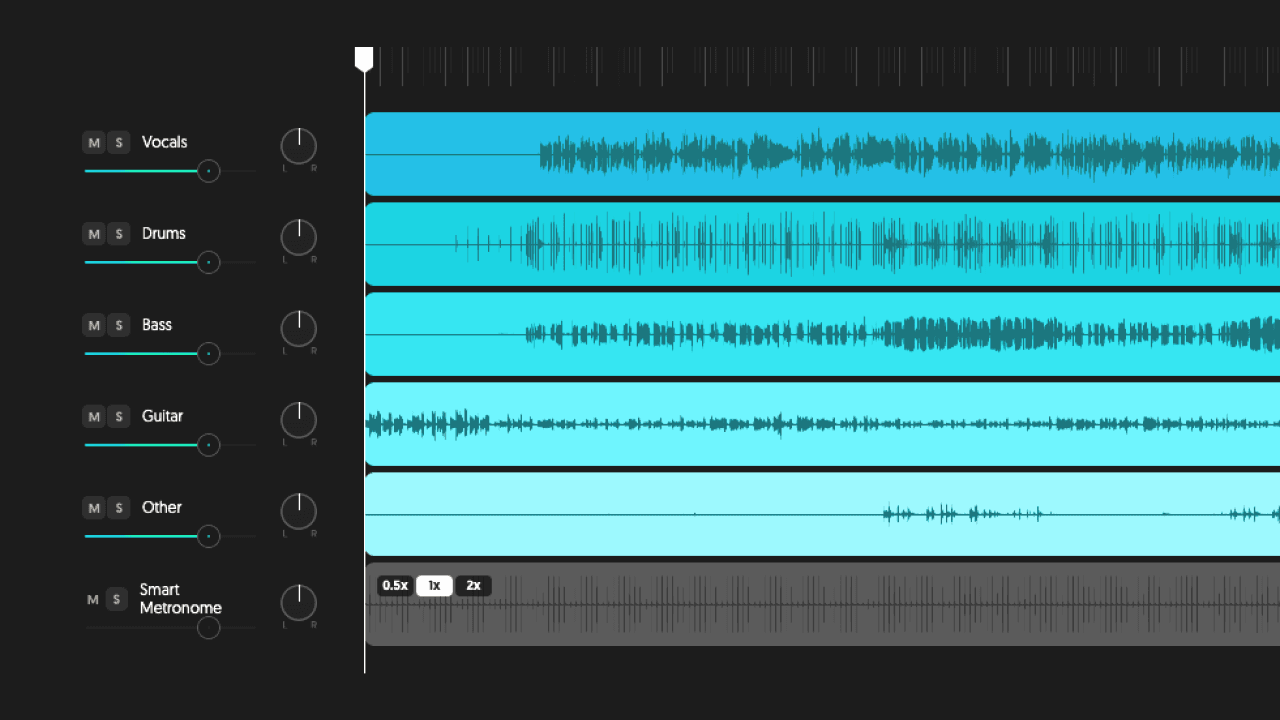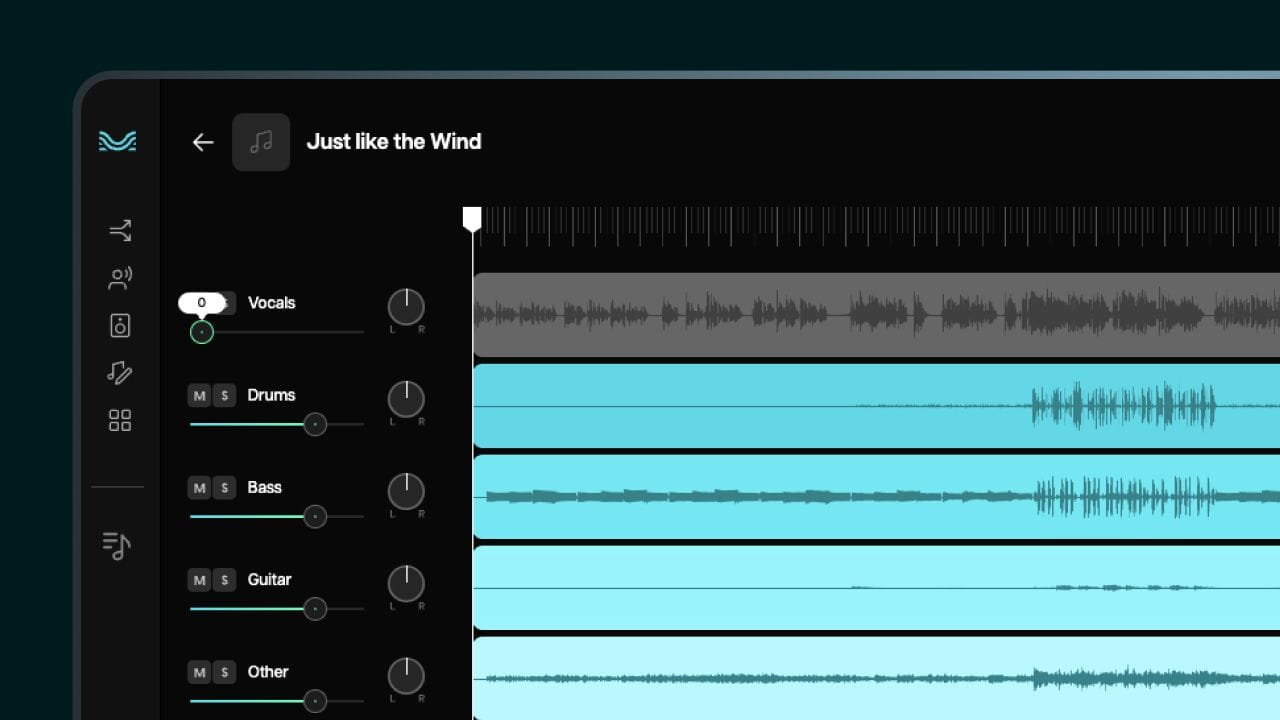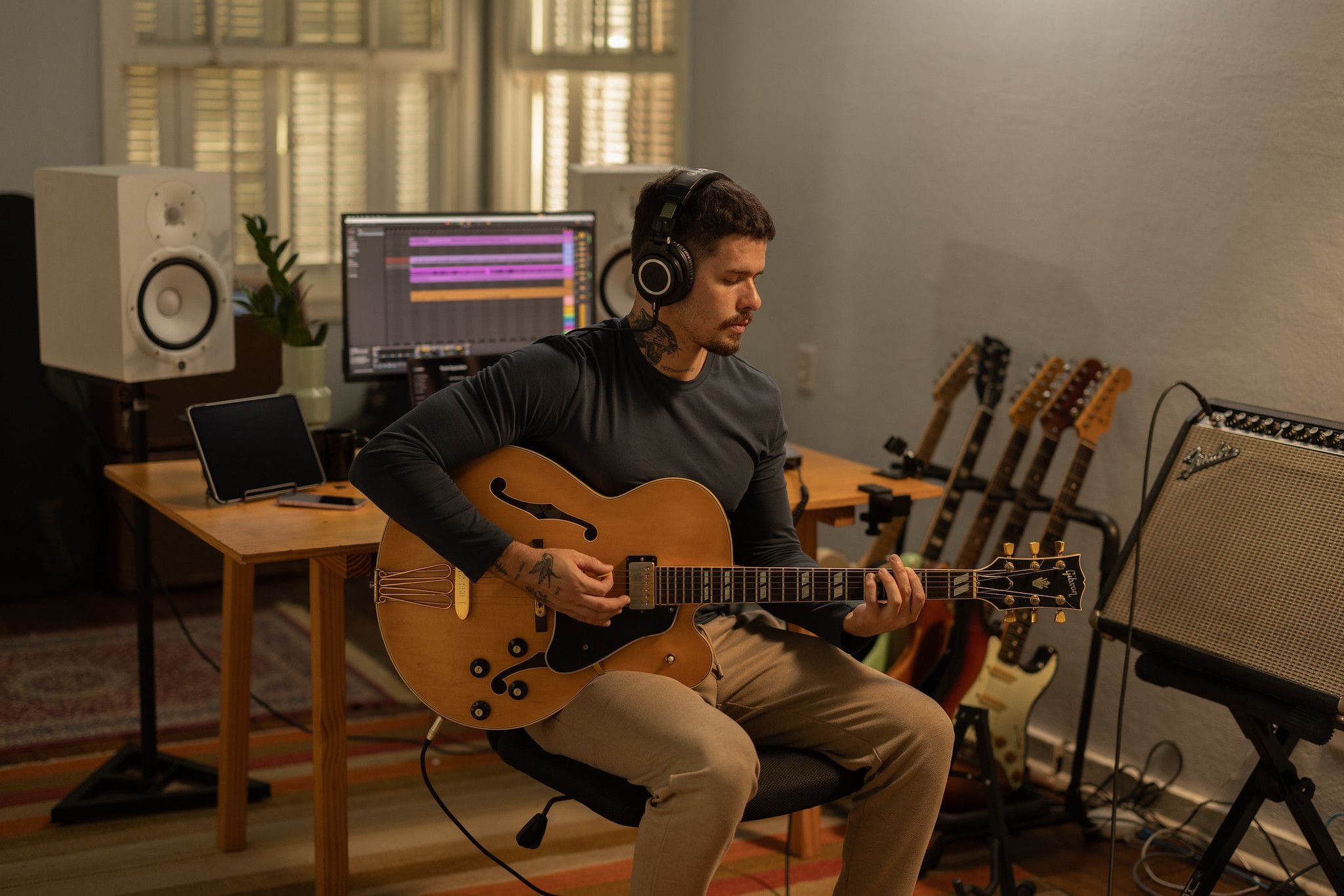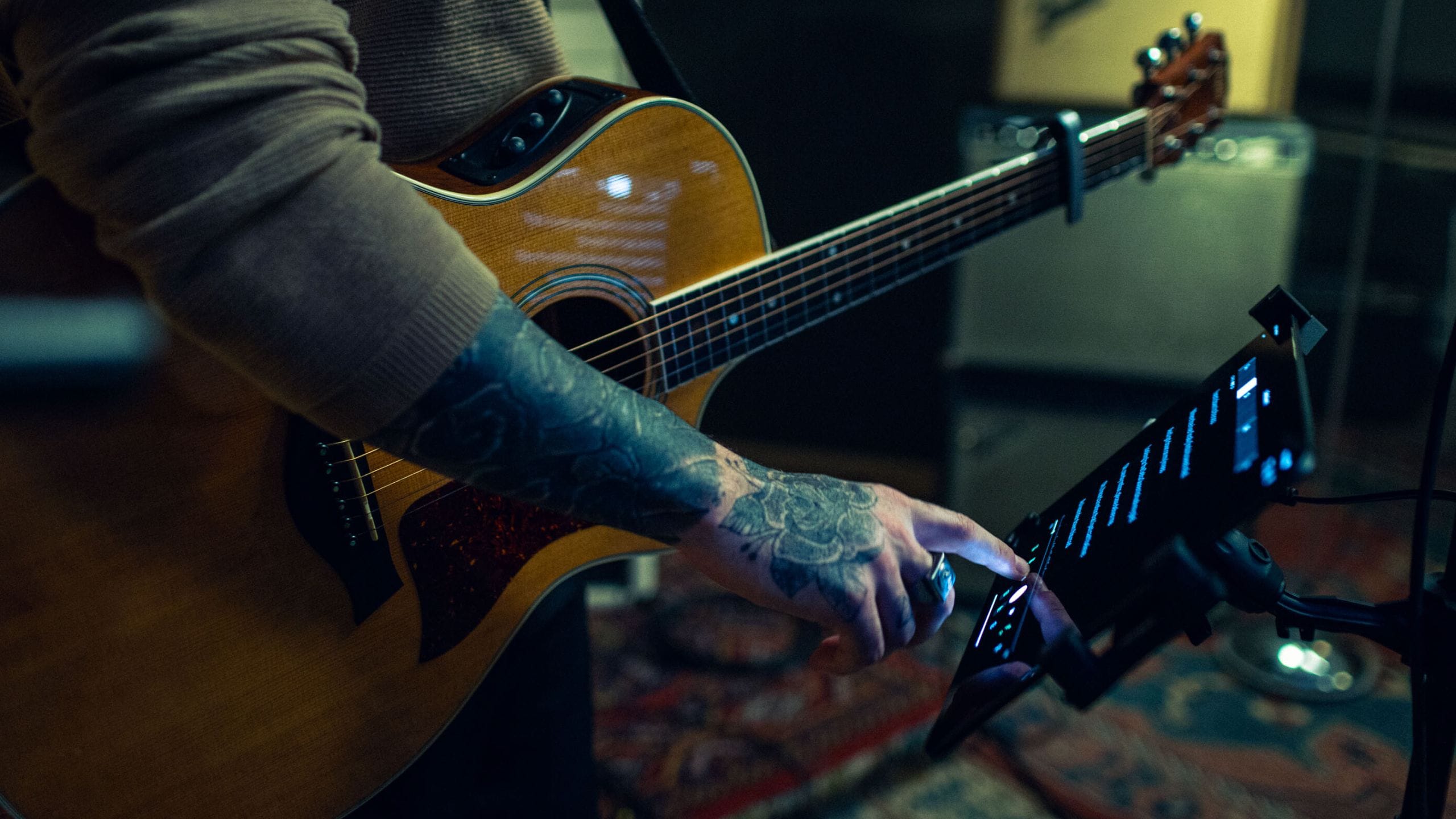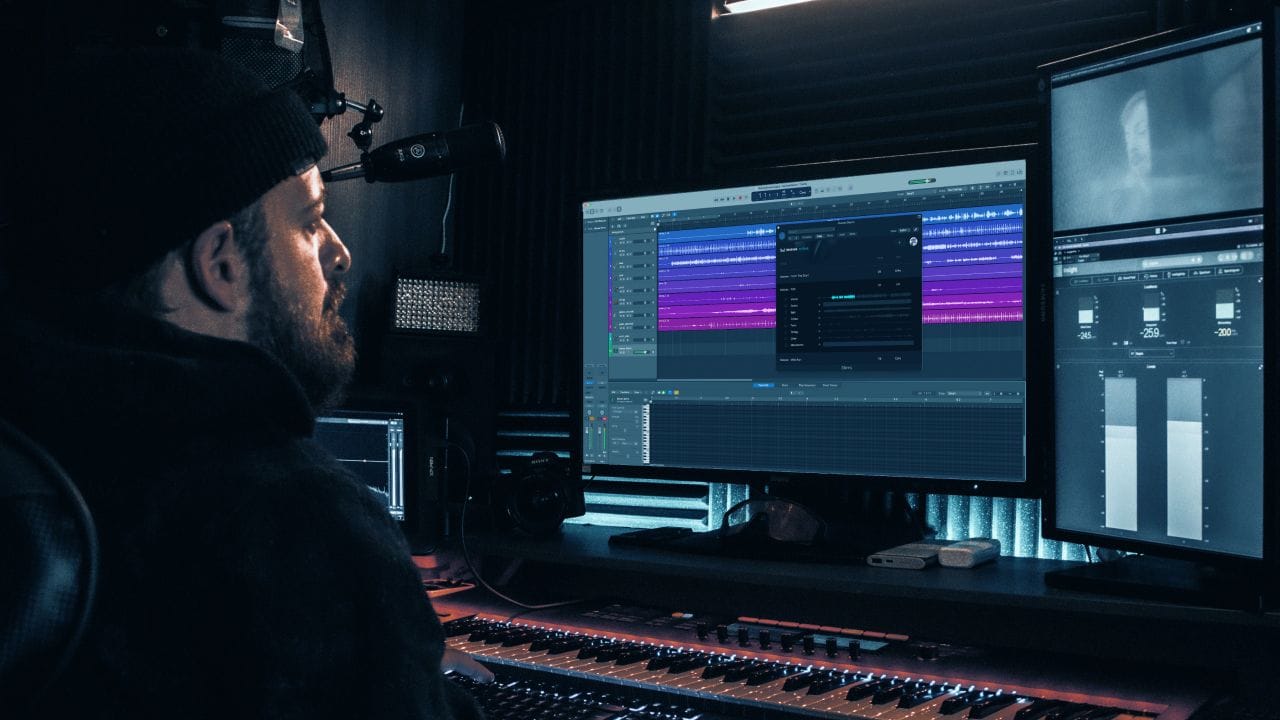As a musician, knowing how to create backing tracks is key when you can’t find what you’re looking for online. And the quest might become impossible if it’s about finding backdrops for specific instruments.
That’s when creating your own musical backdrops becomes most convenient. Plus, it’s a nod to self-sufficiency.
This article will enlighten you on backing tracks and guide you through crafting your own. So, turn up the volume and enjoy!
What is a backing track in music?
A backing track is a pre-recorded foundation for a musician’s performance. It includes the rhythm section and supporting instruments but leaves out vocals, solo parts, or particular instruments. This enables artists to spotlight their talents while merging with a full-bodied sound.
What are backing tracks for?
Backing tracks offer a convenient way to achieve a richer musical experience without needing a full band. They help musicians focus on their craft against a reliable backdrop, serving as great rehearsal companions.
In some cases, these tools can be pivotal for live performances, ensuring a consistent and polished sound. On top of that, they are a must in karaoke settings.
How to find the backing track you want
The hunt for a precise backing track often begins on platforms like YouTube. Many websites also sell or provide free downloads of these versions.
Additionally, musicians sometimes post or seek them out in online forums. Requests for tailored versions can also surface in those scenarios.
Even with such resources at hand, you’ll likely run into elusive songs lacking available backing tracks. In times like these, knowing how to create your own becomes invaluable.
How to create backing tracks
There are a few ways to create your own backing tracks. For instance:
- You might collaborate with other musicians, recording each one’s part before blending the tracks for a cohesive and rich backing track;
- You could use a Digital Audio Workstation (DAW) to arrange and mix various audio tracks, including drums, vocals, and virtual instruments;
- You can also turn to specialized software that helps beginners with chord progression inputs and style selection.
However, collaborating with musicians can be logistically challenging due to scheduling, recording sessions, and equipment costs.
On the other hand, using a DAW requires technical proficiency and time investment — not to mention a steep learning curve for beginners.
And when it comes to beginner-friendly software, most programs are quite limited. They often confine users to pre-set chord progressions and musical styles, resulting in suboptimal sound quality and generic outputs.
But what if all you had to do was upload the song and let AI give you just what you needed?
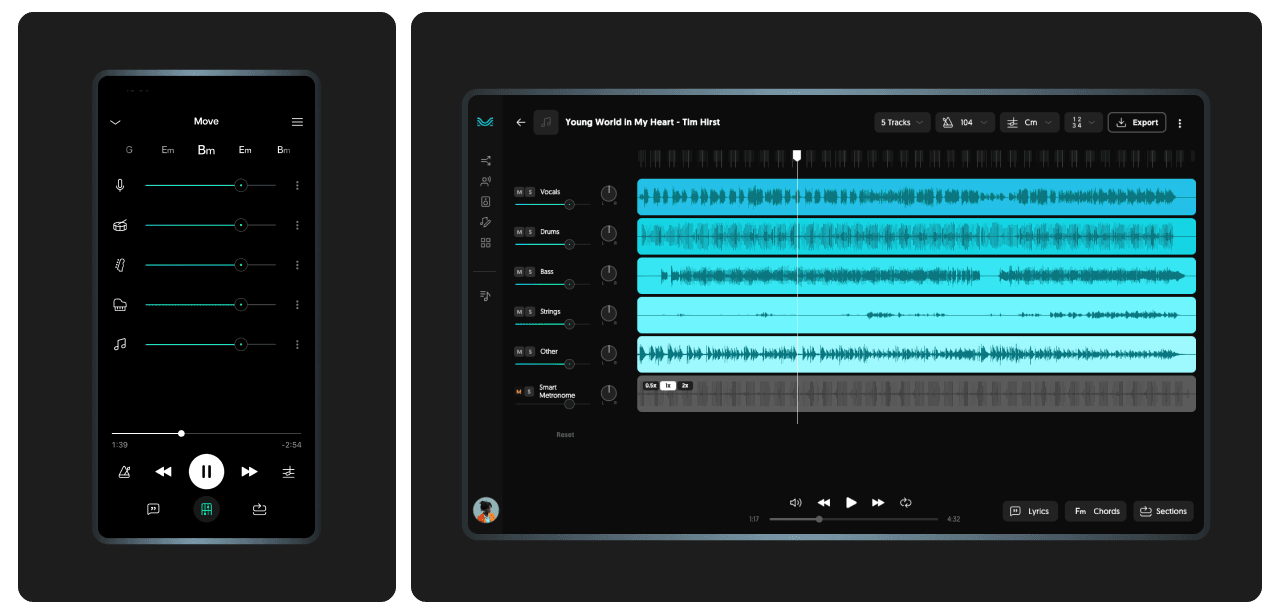
Moises App: the easiest way to create any backing track
Moises marries state-of-the-art technology with a seamless interface and a suite of practical features. The advanced AI precisely separates vocals and instruments. This lets you easily create high-quality musical backdrops and manipulate isolated elements.
But Moises isn’t only about track separation. It offers an array of key functionalities for musicians, including:
These tools are very helpful for practicing, learning new pieces, or customizing tracks.
Moises warmly welcomes all users with options that include a Free plan, which is ideal for newcomers testing the waters of AI-driven music editing. And, once you’re ready to expand the possibilities, the Premium and Pro plans are there to take your artistry to the next level.
Despite its ease of use, Moises AI doesn’t compromise the integrity of your music. It ensures that each separated track upholds a high-fidelity standard.
Next, you can discover how Moises’ backing tracks empower musicians of every stripe.

For singers
Vocalists may benefit from backing tracks in a multitude of ways, including:
- Breath control and endurance: Practicing regularly with these tools improves breath control and vocal stamina;
- Pitch and intonation: Vocalists can train with karaoke to hone their tuning skills. This means reinforcing strong pitch and intonation practices;
- Melodic and phrasal innovation: Backing tracks offer the opportunity to toy with vocal melodies and phrasing within the song’s boundaries;
- Performance readiness: Engaging with a backing track primes singers for impeccable timing, musical synchronization, and dynamic stage presence.
Singers can swiftly generate karaoke-style renditions using the AI-powered Audio Separation feature. That’s possible even with Moises’ Free plan, which allows up to five monthly uploads—but Premium subscribers enjoy unlimited uploads. Meanwhile, Pro subscribers have the added luxury of Hi-Fi stem separation.
After separating the tracks, you can mute the vocal line. This secures a vocal-free version for varied uses, with downloadable final tracks.

For pianists and keyboardists
Pianists and keyboardists can create piano-less tracks on a Free Moises plan by separating stems into vocals, drums, bass, and others. Yet, it’s the Premium and Pro plans that offer specific options for piano isolation.
Piano-free backdrops can be helpful to these musicians in ways that include:
- Accompaniment skills: Practicing with backing tracks promotes an understanding of how to enhance rather than overshadow the lead melody;
- Creative exploration: It becomes safe to delve into original sonorities, textures, and improvisations, fostering distinctive playing styles;
- Repertoire expansion: Backing tracks can speed up song learning, growing repertoire for gigs, recitals, personal enjoyment, and so on;
- Dynamics: These tools help musicians concentrate on the expressive nuances of volume and tone to match the song’s intensity.

For guitarists
Both electric and acoustic guitar players may find backing tracks beneficial for:
- Lead guitar practice: They can practice and improve lead guitar elements, including solos and melodies, without the distraction of original guitar parts;
- Rhythm guitar development: Those musical backdrops help with practicing chord progressions and strumming. This refines timing and feel.
- Stage presence: By using backing tracks, guitarists can get into a performance headspace and practice putting on a show, but without the pressure of an audience;
- Attuned listening: Practicing in a band-like context is a great way to develop a keen ear for blending with other instruments.
Like pianists, guitarists on a free plan can generate their backdrops by muting the other track. Yet, the fail-safe way to get the ideal backdrop is to isolate the guitar track itself using a Premium or Pro plan.

For bass players
Bass track isolation is available even on the free plan. Combining that with its other features, Moises is a cornerstone for bassists at any skill level.
By playing with backing tracks, bassists can improve, for example, in terms of:
- Timing and groove: They can sharpen time-keeping abilities and deepen groove understanding;
- Technique refinement: By practicing without the original bass line, bassists can focus more on their technique;
- Melodic and harmonic exploration: It’s a great opportunity to experiment with new lines and structural insights, stretching creative boundaries;
- Synchronicity with drummers: Practicing alongside drum-minus-bass tracks strengthens the bassist’s ability to collaborate in a rhythm section.

For drummers
Drummers have much to gain from practicing with drumless tracks. This includes:
- Ear training: Playing with drumless tracks enhances a drummer’s ability to listen closely to other instruments. This improves their overall musicality and ability to respond to cues within a song.
- Creativity and spontaneity: This setting allows the freedom to experiment with drum fills, grooves, and patterns, enhancing improvisational skills;
- Timing and rhythm: Drum backing tracks demand a solidified beat and can really improve timekeeping skills;
- Confidence boost: Consistently practicing with drumless tracks hikes up confidence. This way, drummers build the assurance needed to anchor the rhythm section during performances and studio work.
Like singers and bass players, drummers can explore backing tracks with the Free Moises plan. They can also enhance their experience by opting for an upgraded plan.
To sum it up...
Whether you’re a vocalist or instrumentalist, Moises can help you create the perfect musical backdrop. Even with AI-powered separation and a multitude of features, it’s intuitive and easy to use.
When using a backing track, keep in mind that copyright laws shouldn't be ignored. But, public use aside, you have nothing to worry about.
Knowing how to create backing tracks is invaluable for musicians seeking independence and versatility in their practice and performances. This elevates musicianship and possibilities to new heights. And, if you can* do it the easy way*, that’s even better.
